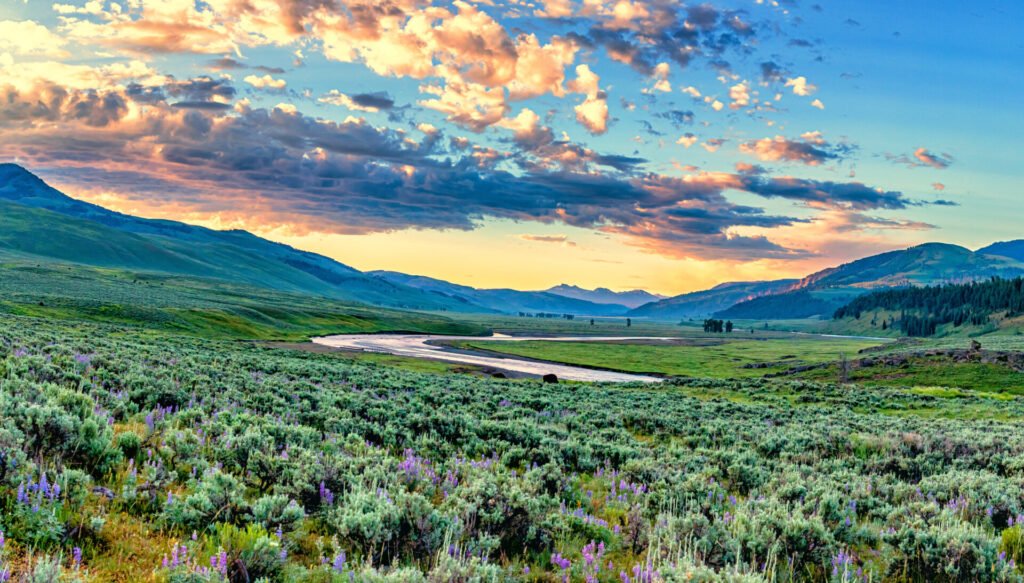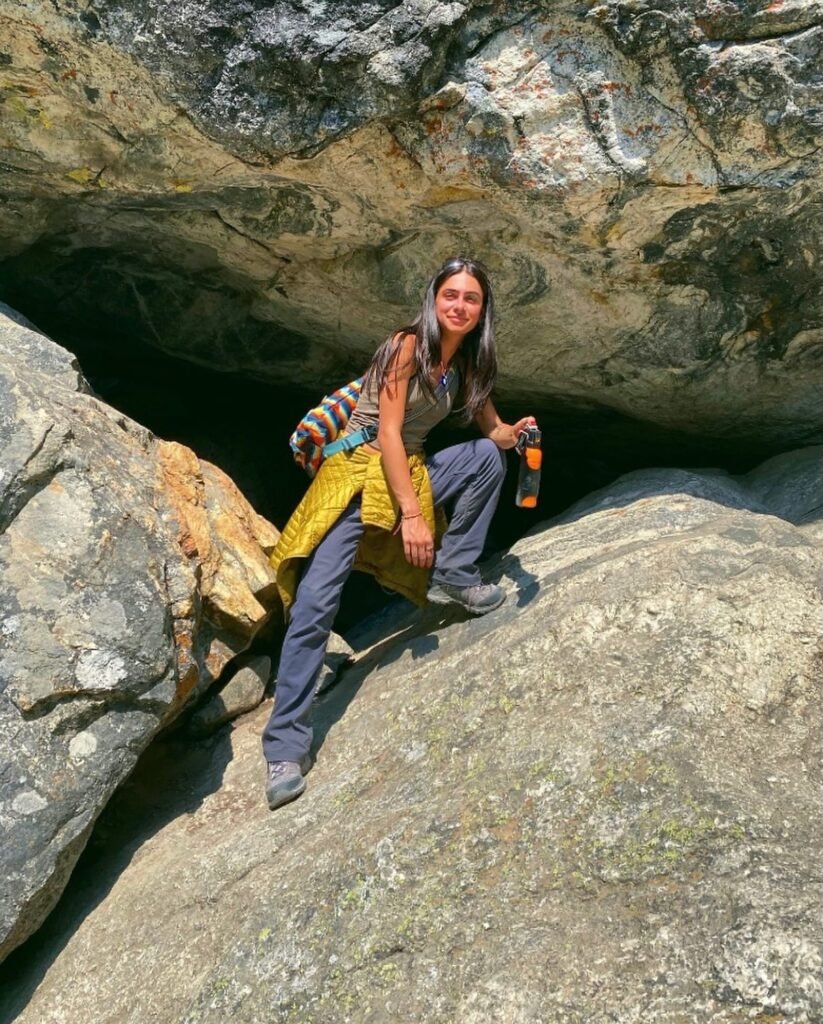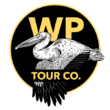Northern Yellowstone Wildlife Viewing

Yellowstone’s northern loop is home to abundant wildlife and holds some of the best viewing areas in the park. It has over 1,000 miles of hiking trails, so to help make your decision on a day hike a little easier, we listed below some of the trails we love and often provide the best chances of animal spotting. As always, when viewing wildlife from trails or by roads you are required by law to give bison and elk over 25 yards of space, and predators require over 100 yards. Bear spray is always recommended on any hike through Yellowstone, and could be your lifesaver in an emergency situation. Be bear aware!
Trout Lake
This 1.5 mile loop gains 61m of elevation, making the perfect hike for any family. It features a lake, several species of wildflowers, and if you’re lucky an otter sighting! This hike is absolutely perfect for taking in a sunset, as it only takes about 15 minutes to hike back down to your car. In early/mid-July you can observe the spawning of Yellowstone Cutthroat trout.
Hell Roaring
Hell roaring has a few different end locations, so this hike ranges from 2.1 miles- 4 miles. This hike has a 191m elevation change and takes you down wildflower covered switchbacks, and lands you at a beautiful suspension bridge over with roaring water right below. This trail is ranked as moderate due to the descent down to the river, and has little tree cover/shade during mid-day. This trail has quite a bit of wildlife, such as; Black and Grizzly Bears, elk, and badgers. (And can also be a good place to observe some beautiful shed antlers!)
Lost Lake
Lost lake is a 3 mile loop that gains 204m elevation and features a lake with blooming lily pads in the summer months. This trail can also be started at Petrified Tree for less elevation change and more wildlife viewing. Black bears and bison frequent the petrified tree area and it’s quite possible you might see one on your way in! This trail is considered easy when starting at Petrified Tree, but Moderate when entering from the Roosevelt corals as there is a steep incline at the beginning.
Osprey Falls
This 9 mile trail features a large waterfall and has an elevation gain of 610m. This hike starts on Old Bunsen Road and takes you through beautiful meadows with an opportunity to see elk and sometimes even black bears! A majority of the elevation change is from descending down the canyon to see the majestic waterfall, where you might even spot some mountain goats!
Mount Washburn
The Mount Washburn trail is a 6.7 mile long hike that follows what was formerly a service road and is ranked as moderate due to the amount of switchbacks and the 452m elevation change. This trail usually has a fair amount of snow towards the top through the end of June/Early July, and is home to several bighorn sheep and mountain goats who are seen there often. The views at the summit also make this trail a Yellowstone favorite.
Yellowstone River Picnic Area
Yellowstone River picnic area hike is a 3.9 mile loop, but we recommend doing it as an out and back as the second half of the loop follows the road and the majority of the views are in the first half of the trail. The elevation gain is 136m, and follows the north side of a beautiful river canyon with easily viewable mountain goats and bighorn sheep climbing the opposing wall. This trail is a huge wildflower hotspot, and the home to several marmots.
My Personal Favorite
To end this post, I’d like to share my personal favorite out of the six. I’m a big fan of wildflowers and there is nothing cooler than 18+ inch cutthroat trout in massive numbers getting ready to spawn, so Trout Lake is definitely the winner in my book. This trail is family-friendly, a great little hang-out spot for any angler or wildlife enthusiast, and makes an amazing hike-out picnic spot.

Do you have a favorite hike/hiking memory from Yellowstone? We’d love to hear about it! Email us with any inquiries about these hikes at info@wptourco.com.
Ava Bloomquist, Co-Owner and Principal Guide
